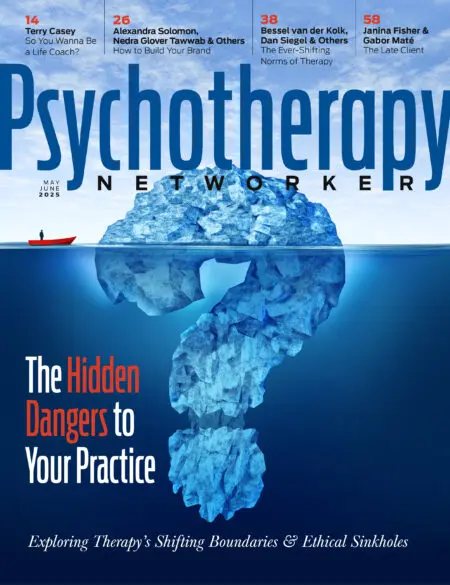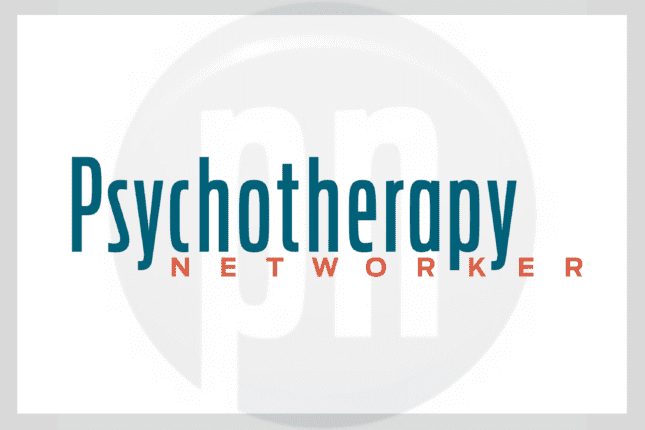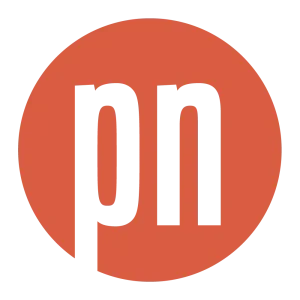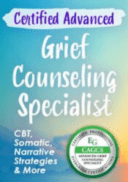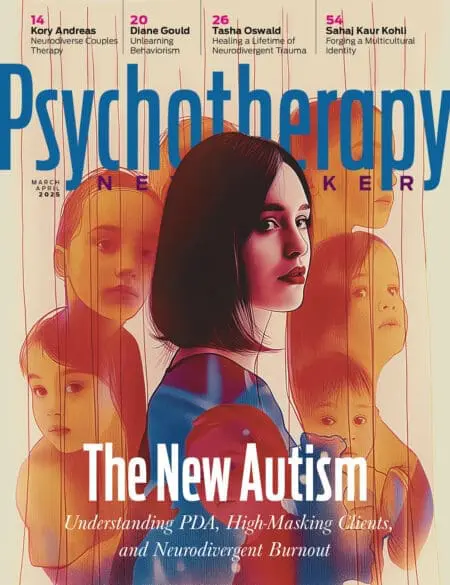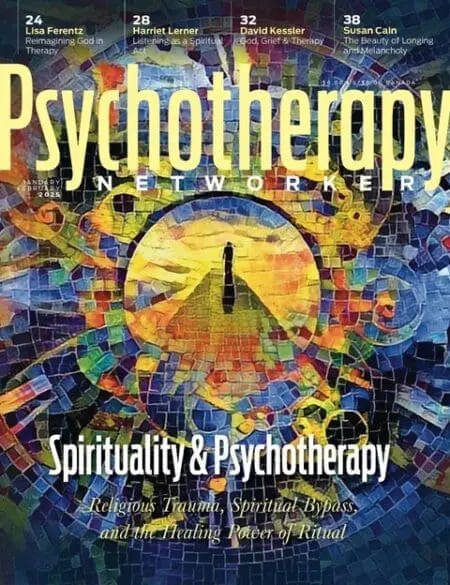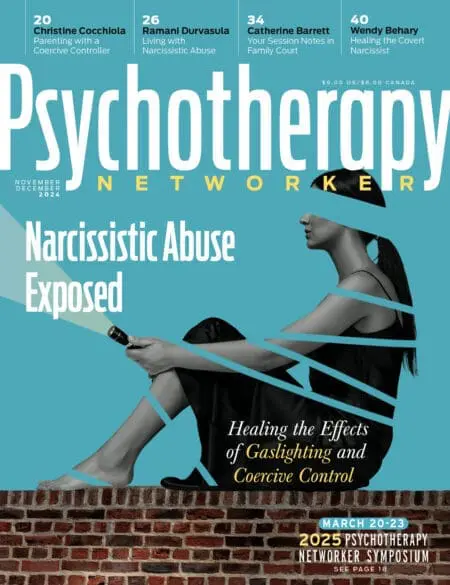On a day long before the Occupy Wall Street Movement began, I met with a large group of 21st-century child professionals who were on a tear about the multiple inadequacies of today’s mothers and fathers. Sparks of indignation about parents’ inability or refusal to take charge of their kids—to create any kind of appropriate hierarchy in the family—lit up the auditorium. “They’re scared of their own children!” one proclaimed to nods of agreement all around. “If I ever said just one thing to my parents the way they allow their kids to talk to them every single day, I know exactly what would have happened to me!” said another. “They’ve abdicated, handing their children over to us to raise!” yelled a third. The general consensus was that today’s parents had become a “doormat generation” to their own kids, and that they were resisting all efforts by well-meaning professionals to help them grow parental backbones. It was enough to make one’s head spin.
Well, until later. That evening, I met with hundreds of parents from the same community. In a weirdly antiphonal response to what I’d heard earlier in the day, they rocked the school auditorium with their complaints of how hard—no, impossible—it was to be a parent today. School was a bureaucratic, relentlessly demanding, social and academic rat race that wasn’t even preparing their kids for the future. A vast and frightening Internet culture was hijacking their kids, and they were helpless to do much about it. These parents said they were trying so hard to make ends meet that they had little time left over just to be with their kids, much less maintain consistent authority over their lives.
Besides the more familiar complaints, these parents railed against accusations that they weren’t trying to take charge of their own children and teens, even as they admitted just how hard that had become. It was as though the earlier meeting with school administrators and educators had been bugged. In fact, the parents made clear that they wanted to be more effective and engaged, but were blocked not only by social forces, but by the very childrearing system that was supposed to prepare their children for adulthood. More and more, the collective verdict was clear: the conveyor belt of 21st-century childrearing was seizing up, and the academic and therapeutic professionals working with children “just weren’t getting it.”
Not long ago, I might have heard parents talk as if their kids’ problems—drugs, school failure, or acting out—were matters for individual families to resolve, sometimes with the aid of a therapist. Now, I’m seeing mothers and fathers challenge the entire social, educational, professional, and economic context of childrearing—a system, they increasingly believe, that’s made effective parenting almost unachievable.
It’s no accident that since the economic implosion of 2008, following decades of stagnant or declining income across the socioeconomic spectrum (except for the very top), the tone of my conversations with parents has shifted dramatically. Adults were already under siege trying to handle the incomprehensible newness of what seemed to arise each week in kid-universe. That was followed by financial stress, chronic joblessness, underwater mortgages, and college savings raided to cover family living expenses. It’s little wonder I’d begun to register parental impatience and resentment toward child “experts.”
There seems to be another, noneconomic reason for parental dissatisfaction with the current childrearing situation: the tendency on the part of child experts, including too often me, to blame parents for what’s going on. In fact, as I speak with child clinicians and educators across the country, the parent-blame knocks me over. I can’t help but think, How can we help the very parents we seem to hold in such disdain? It seems particularly ironic that, as therapists, we don’t appear to have empathy for parents who are trying to muddle through a perfect storm of interconnected cultural and social circumstances that undermine the foundations of parental self-confidence and integrity, even of family life itself. After all, “post-boomer” parents, a majority born after 1964, are watching the implicit social contract they grew up with—“If you try hard enough, you’ll get ahead”—disappear right before their eyes. Parents across the economic spectrum, the other 99 percent, are the first post–World War II generation to be told that their children will be less prosperous than they are, perhaps much less prosperous.
Our therapeutic gaze often seems to pass right over the broader parent-subverting social and economic forces that shape our therapeutic work, to focus almost exclusively on what individual parents are doing wrong. Of course, therapy is personal. We can’t change the economy or revoke the malignant effects of cyber technology or unilaterally humanize school culture. We can, however, take a hard look at mothers’ and fathers’ view of the world, connect more effectively with them, and—who knows?—even begin to help them negotiate the daunting challenges they’re facing in a childrearing context gone wild.
Parental Uncertainty
“How can I get my child to not go to midweek concerts when almost everyone else in the school is going?” “It’s one thing to tell my kids not to drink and drive, but how can I stop them from texting while they’re driving?” “You tell us that we should limit screen time, but how can we when half of the homework in elementary school is online?” “When my preteen son calls me from anywhere on his phone, how can I be certain he’s really where he says he is?”
These are just a few of the questions I increasingly hear from parents and groups across the country. On top of losing faith in a secure future, mothers and fathers deal with everyday dilemmas that make a joke of traditional rules and childrearing practices. Unfortunately, many therapists still seem to believe that reliable solutions to the problems families face can be readily found in our psychodynamic, family, or standard evidence-based protocols. The rampant “medicalization of childhood”—our attempt to assist kids in getting the help they need to grow up in today’s tumultuous world by assigning more and more DSM diagnoses—doesn’t instill parental confidence either. “How many of you are familiar with the following diagnoses?” I ask parents. As recently as five years ago, most had only a vague sense of the acronyms used every day in our work. Now ADD (attention deficit disorder), AD/HD (attention deficit/ hyperactivity disorder), PDD (pervasive developmental disorder), ODD (oppositional defiant disorder), spectrum disorders, Asperger’s, bipolar I & II roll off parents’ lips so easily you’d think you were at grand rounds in a teaching hospital.
By the time kids are 18, at least half of them have already received a psychological diagnosis. While many mothers and fathers have become psychological sleuths, searching their child’s behavior for any sign of disorder, others continue to believe that the only thing wrong with kids is a lack of discipline. All the while, it becomes harder and harder to distinguish between psychological aberrations and the peculiar 21st-century context in which kids are growing up.
Fifteen-year-old Serena can’t settle down at night. Her mind hurtles between anxiety, excitement, and unbridled enthusiasm—you might say she’s rapid-cycling. Along with an inability to tear herself away from her online world, she’s fallen dramatically behind in school. In a reversal of the usual sleep–wake patterns, she’s awake all night, sleeps until early afternoon, and misses entire days. She’s had so many diagnoses it seems inevitable that she’d eventually receive a bipolar II label and several trials of medication. But it’s more complicated than that—she’s also a hypertexter, as many kids with attention and mood vulnerabilities are, and has been the object of intense peer attention, keeping her involved in text interactions that never cease. She can’t stop reacting physically or emotionally to her phone, which she says, “might as well be glued to the inside of my head, it’s so much a part of me.” Is this a true bipolar disorder, an acquired difficulty in affect-regulation triggered by the warp-speed electronic world she inhabits, or both?
Serena’s parents were skeptical about the bipolar diagnosis; it was just the latest tag from a long line of experts who didn’t have a clue about what was troubling their daughter.
They were fed up with the judgmental attitude of clinicians who intimated that Serena’s problems were due to “poor hierarchy” in the family, along with their expectation that she could just be ordered to give up her tech lifelines, cold turkey. Like others who’d had it with the parent-blaming diagnostic merry-go-round so prevalent today, Serena’s father and mother decided to take matters into their own hands. Having had their fill of standard mental-health interventions, they opted to explore alternative approaches to diagnosis and healing—skin and hair analysis, meditation, biofeedback, homeopathy, yoga, cranial-sacral therapy, exercise and diet regimens, organic pharmacology. The combination settled Serena down some and increased her parents’ confidence that they could tolerate guidance from me. Their daughter, whom I never met, began easing into an alternative school program that made more slowly escalating demands. I soon learned to respect her mom and dad’s skepticism about what the school system and therapy-as-usual had to offer.
Escalating Fears
Almost nothing evokes more fear and dread in parents today than the omnipresent specter of social cruelty and bullying. Schoolyard bullying, combined with the seemingly inescapable online universe of hurt, has become part of the fabric of life today for kids and their parents. At least a third of kids report having been bullied recently—2.7 million incidents being reported each year. Bullying knows no age, gender, economic, or ethnic bounds, though LGBTQ victims are four times as likely as others to be targets. As the media increasingly report, cyber-bullying has led to high-profile suicides of children at every grade level from elementary to high school. There have been incidents in which families have moved to other towns to get away, only to have the ostracism and even death threats begin anew. Social cruelty is reported in every gathering of professionals I teach. By age 4, nursery-school kids are forming exclusionary in-groups—“kindergarten-cool,” as I call it. A group of high-school students recently went online to encourage a despondent peer “to end it already” and finally jump from his roof, as he’d been threatening to do for weeks.
Social cruelty and bullying have always evoked strong reactions in my audiences, but it used to be that bullying triggered vociferous battles between the parents of presumed perpetrators and those of their alleged victims. Lately, however, I’ve noted that most parents identify with each other, recognizing that with a 24/7 gossip cycle, none of them has any real control over what their kids do, or what’s done to them. Because of this shared vulnerability, parents direct harsh words less at each other and more toward school personnel and child professionals for their perceived ineptitude in addressing the bullying problem. Since most studies reveal that kids go to us adults for help and end up feeling we don’t know what to do either, it’s striking how little formal training we receive in this area. It’s understandable that parents seek help elsewhere.
I recently consulted about Ian, an otherwise ordinary 7th-grader in a suburban public school in the Pacific Northwest. Things had gone missing from kids’ backpacks, and as thefts continued, Ian worried he might be the next target. After talking it over with his stepmom, who wanted him to “do the right thing,” he told the guidance counselor. The counselor then made a classic mistake: somehow, he let the word out that Ian was the person who’d “ratted.” For almost a year, every boy in his class taunted him. What was striking and post-boomerish was that the girls were equally relentless, assuring Ian, in case he had any thoughts otherwise, that no one in the school liked him. “Why don’t you just die?” one after another remarked.
When I consulted the school officials, no one had any answers, other than to briefly suspend the perpetrators, implement prepackaged social-emotional interventions, mediate, and hope for the best. In fact, the principal and guidance counselors said they’d appreciate any help they could get. By contrast, Ian’s parents, furious at this ineptitude, told me about numerous “bully-sites” that assist mothers and fathers to help each other. I was stunned to discover the extent of the practical suggestions and concrete action steps parents (and increasing numbers of professionals) offered, which I then shared with school officials. In the end, finding one key “popular” boy to approach Ian in a friendly way changed the tide and let him slowly emerge from the hell of middle-school ostracism.
To the extent kids feel abused socially and academically, their parents feel abused and held hostage by fears of what might become of their children. The integrity of almost every parent I work with is undermined by catastrophic scenarios of how his or her child will be dragged under. One dad is afraid that if he doesn’t offer praise for shoddy effort on a term paper, his son will stop functioning and fail in school. A mom fears that telling a guidance counselor about the excessive drinking of her daughter’s best friend will destroy her child’s social standing forever. A father believes that if he tries to teach the value of “moderation,” his teen will become even more oppositional and refuse to come home at night. A mom is scared that if she follows through on grounding her 11-year-old from a birthday party, the girl might be excluded from weekend play dates.
While all this can sound absurd, a chronic sense of being held hostage by kids and the culture at large helps explain why parents so often show up in our offices looking and sounding like spineless wimps. With so little time to bond with their children, parents are afraid to take even one step that could drive them farther away, undermine their already shaky school performance, and ruin their chances for social success when little else seems to matter. Not surprisingly, a multibillion-dollar public and private enterprise monetizes these insecurities by selling a raft of social modules and remediation services—including tutors and homework helpers for the well-heeled and supplemental educational materials designed to jack up reading and math scores. The issue isn’t just parental abdication, but what I call the “merchandising of childhood,” based on a deep-rooted fear of failure.
Cynics and Refuseniks
In a tightening economy, with overcrowded feeder-schools and an uncertain future ahead, it’s easy to understand why kids aren’t enthusiastic about school. College is so exorbitantly expensive that students frequently drop out, unable to pay the tab. And if they do manage to graduate, young adults still face high unemployment and skyrocketing living expenses, which often drive them back home, still owing thousands of dollars in student loans. No wonder many kids I meet do the mental calculation of all the money and effort and decide not to kill themselves trying. “Is it really worth it?” they ask. Besides, instead of this potentially unrewarding grind, many of them harbor a new 21st-century, techno-driven fantasy. When I inquire about their hopes for the future, I often hear them earnestly voice expectations that a single YouTube gone viral or a cell-phone app or a reality TV part will instantly “explode” them into a life of bling.
Kids notice that many schools have been forced to drop programs and facilities (music, art, physical education, libraries) because of mass layoffs and underfunding, while better positioned, more “competitive” schools in more affluent areas have turned into deadly serious, four-year cram-courses geared to standardized tests. In either case, as numerous studies show, play, imagination, and downtime have been crowded out, and with them, the time for the young brain to synthesize and actually learn what’s been taught. Whether it’s “No Child Left Behind” or “Race to the Top,” parents feel that they and their kids are victims of a kind of educational and social scam, and are deeply cynical about a system that treats kids as if they’re commodities. They see the top 5 to 10 percent, mostly from the wealthiest families, making it to elite colleges, thanks to private schooling and “legacy” admissions, as well as a multibillion-dollar infrastructure of tutors, special courses and study-abroad opportunities, and parent-funded “community service” points. Meanwhile, lower- and middle-class parents have no or limited access to such “helping hands” so readily available to the privileged.
This cynicism is fed by the recognition of widespread cheating. In fact, with the vagaries and hard-to-trace sources available via Internet study, many faculty groups I’ve spoken with describe how difficult it is to draw a clear line between what’s truth and what’s plagiarism. For many kids—with the implicit collusion of their parents—cheating is no longer considered a moral issue, but rather a necessity. Some families engage in cheating with a sense of complete justification; after all, as they experience it, the system has already been gamed beyond recognition. Recent allegations of kids for hire to take others’ exams, along with widespread systemic tampering by adult educators to lift achievement test scores, only strengthen parental irreverence for the school system.
Cassie showed up in my supervisee’s office having been out of school for a year. Sure, her mother was deeply unhappy with her intransigence about attending school, but, after several courses of unsuccessful psychotherapy focusing on the issue, had almost come to agree with her daughter’s decision to stay home. Cassie was ornery, like many teens, but mostly respected the limits set by her mother. Except for that pesky little detail of not attending school, her life appeared normal. Through texts, e-mail, Facebook, and personal contact, she kept up with her friends and continued to be a self-respecting citizen of her peer group’s pop-culture world, spending most of the day online or watching TV.
As I heard her therapist’s reports, I understood that Cassie’s choice was borne not primarily from some pathology, but out of a desire to remove herself from the viselike grip of her suburban high school. There was too much gossip, and everyone “up in her grill” noticing the smallest details, most of which would end up online anyway. Plus, she was faced with a college-preparation process so unrelenting in its subversion of self-esteem that she decided not to engage in it. The therapist finally understood that Cassie had made a decision to go her own way, and that her mother, after fighting deep disappointment, was ultimately advocating for this choice. After spending a great deal of time struggling with self-blame, Cassie’s mom had learned to support an alternate path: her daughter would work toward an online diploma from a for-profit school.
Xavier is another good case study. In 9th grade, he began hanging out with his posse of likeminded dudes, smoking and drinking every day, lost in the video games “World of Warcraft” or “Call of Duty,” and gradually racking up one absence after the other. His working-class parents, steeped in hopes that he’d go further in life than they had, often blew up and tried to set limits. But as angry as they were at him, they were angrier at the school. Xavier had accumulated more than 40 absences and late arrivals before anyone had bothered to notify them. At the parent–teacher conferences, the dean expressed some alarm, but never suggested a plan of action or followed up in any way. Indeed, Xavier’s mother and father got the impression that the school thought the problem was somehow their fault, and that they should do something about it.
And who could entirely blame the school personnel? Overwhelmed by statewide and national demands, along with overcrowding, how much time could they realistically give to yet another boy who preferred to smoke weed and play video games? After several courses of stimulants, evaluations, and therapists who warned them about their not being strong enough, Xavier’s parents ended therapy and sent him to a newly established public charter school, from which he eventually graduated.
Cassie’s and Xavier’s families aren’t alone in their distrust of the school system. The number of kids being home-schooled has grown almost threefold in just five years. More extreme alternatives are becoming more popular, too—wilderness programs, for example. A few years ago, there were 30 wilderness possibilities; today there are more than 300. Every therapist I know has sent several patients off to such a program. The thought of sending kids away used to go against the grain for me, but now I see it differently. In some cases, by removing children from impossible situations, wilderness programs can succeed where other interventions fail.
Paul, failing in school, unmotivated, resentful, and the recipient of a list of diagnoses from a half-dozen therapists and psychiatrists, including AD/HD, depression, ODD, and social anxiety disorder, had taken to smoking away his sorrows. In fact, weed calmed him, structured his thinking, and masked his severe social anxieties. The more he smoked, the cooler he became, attracting the other stoners in the school. Finally, fed up with endless diagnoses, multiple medication trials, and unsuccessful attempts at individual and family therapy, Paul’s mom decided she’d take matters into her own hands and try a tough-love approach.
With her brother’s help, she grounded her son on weekends for three months, cut off all spending money, and forcibly separated him from most of his technology. Being a resourceful 21st-century teen, however, Paul fought back, employing a wide range of modern tactics: he communicated by texting at 3 a.m., paid for his dope by doing other kids’ homework, and snuck out at night, returning before dawn. The adults matched every move with more stringent rules, but it finally became clear that more drastic action was needed. After some handwringing on everyone’s part, two burly escorts descended on the home one night to escort Paul to a ranch in the mountains of Utah to be with boys in similar circumstances and a set of surrogate parents. After some time away, he returned home, graduated from high school, and began community college—not what was initially hoped for, but, given the alternatives, a preferred outcome nonetheless.
The Choreography of Community Change
I spent my early years as a therapist in community-based clinics, where my entire workday took place within the confines of an office. The orthodoxies of the day dictated that only our preferred therapeutic methods could possibly be of use to the people who came to us for help. Anything else would simply be “Band-Aids,” not “real” treatment—not deep or rigorous enough. Then, one evening, the mother and father of a young teen I was seeing in therapy invited me to a grade-wide parent discussion group. As I listened to the conversation unfold—whether to allow a 14-year-old to go to a drug saturated all-night rave, how to handle younger kids’ exposure to screen sex, and, of course, how (and whether) to set limits on children who knew no bounds—the coordinated kid-assault against adult authority was hard to ignore. At the next session, someone said, “Now you know what we’re up against.”
Since then, I’ve done well over a thousand talks and consultations outside the treatment room. The experience has transformed my perspective on the difficulties parents face every day and what I, as a therapist, can realistically expect of them. It’s convinced me that what most overwhelmed parents of out-of-control kids need—just as much as psychotherapy—is a strong, vibrant community that includes other parents. Parents need help and encouragement in authority building, and we have the skills to help them, but, unfortunately, it’s an occupational hazard of our profession to sit in an office or agency or hospital, expecting people to come to us, because it removes us from where the real action is. As therapists, I believe we’re uniquely suited to stretch our therapeutic frame into the wider world and help parents construct viable, supportive, 21st-century communities among themselves. After all, we know and work with the key figures and main stakeholders—kids, parents, and school personnel—and we have the skills to build sturdy bridges between these parts of the system, too often isolated and antagonistic toward each other. The question is: how do we begin?
A Community of Learners
I’ve found that the first step in the choreography of change is recognizing the importance of what Harvard Medical School professor Alvin Poussaint calls natural “chit-chat.” According to Poussaint, mental health workers underestimate the importance of having people discuss ordinary concerns on their own turf—in churches, synagogues, and community centers. However, the more at ease parents become talking with other parents, as well as school personnel, the more self-confident they become, and the more personal authority they’ll be able to muster with their own kids. There’s nothing like understanding that you’re not alone to raise the spirits and strengthen the spine.
I’d been consulting with Deirdre, the single mother of two preteen girls whose sibling rivalry had taken a major turn for the worse, exploding with brutal nastiness. She was afraid she’d physically lose it during their relentless put-downs and battles. We were stymied until Deirdre invited me to be part of a dinnertime gathering in her elementary school with parents from several classes. Both of us were stunned as mothers and fathers in her older daughter’s grade complained about a sudden upsurge in the exact same aggressive behavior. No one could figure out why this was happening until further discussion uncovered a vicious social jockeying that was taking place, encouraged by several new kids in school and a crass, popular video game that had heightened the nastiness within the school’s pecking order. Hearing this information immediately lessened Deirdre’s harsh self-blame, which I’d been unsuccessfully trying to ease. Having heard “normalizing” stories from other parents, Deirdre began to regain her own calmer, more authoritative voice, rather than flailing wildly at every transgression. Treatment ended within weeks, but she remained connected to her parents peer group, which continued to hold monthly meetings for the rest of the year.
Parent peer groups can serve as “park bench” communities that are antidotes to the fragmentation of modern neighborhood life. At one large suburban public school in the Northeast where I consulted, a guidance counselor initiated a parent group that became so popular that in almost no time it spun off five other groups—one for almost every grade. Listening to their stories, the counselor not only heard parents’ homespun strategies—have her turn off an alarm when she gets home at night, because if she doesn’t, you’ll know she’s late; spend two minutes of quiet time with the child who can’t leave in the morning; kick the 3-year-old out of your bed at night and let him cry—but also was able to uncover hidden eating disorders and undiagnosed learning issues.
Simple, easy conversation is essential, but it’s just a start in dealing with 21st-century uncertainty, fear, and cynicism. At some point, park-bench dialogue is insufficient: the adults in the neighborhood must collaborate to build a new town square if kids are going to feel held by them. So, increasingly, parents are approaching school administrators to initiate parent–school partnerships. The key moment of transformation in such partnerships is often when, instead of focusing on children, the adults begin to focus on changing themselves. At that point, these groups become what I call a “community of learners,” as members decide to explore themes that touch all of their lives—diversity awareness, bully programs, or easing the viselike pressures of 21st-century life—and learn from each other.
Eddie, a 14-year-old client, was being taunted by his high school classmates for seeming “gay.” His parents took it lightly, criticizing him for making the situation worse by reliably getting upset every time someone taunted him. “Just ignore it,” his mother said blandly. Eddie did have a pretty thin skin, so the taunts grew worse; one time, some boys even refused to change clothes near him in the locker room. As Eddie’s mood slipped, his grades began to fall. However, during this time, the parent–school partnership I’d helped organize began a diversity initiative. Posters from the student gay–straight alliance appeared throughout the school announcing meetings, flyers on the subject were sent home, and teachers felt greater ease about bringing up topics relevant to persecution, both personal and historical.
Throughout Eddie’s struggle at school, his dad had clung to his lifelong mantra, “What doesn’t kill you makes you stronger,” which hid his own childhood hurt at being told so often to “sink or swim.” But with a changed attitude toward tolerance generated by the partnership, Eddie’s dad first requested—then demanded—that the school take action to stop the taunting of his son. Weeks later (it still took this long to move the school from a “boys will be boys” mindset), the administration finally threatened Eddie’s tormenters with suspension. Before this could happen, a remarkable thing occurred: Eddie, having absorbed these new voices himself and seeing his once-critical father advocate so fiercely, suddenly confronted one of the boys, screaming in the lunch room: “You say I’m gay. So what if I am? This school is supposed to be for everyone. If you can’t deal with that, you don’t belong here, not me!”
Silence followed. As everyone stood frozen, stunned with the force of Eddie’s outburst, something changed. The boys never grew to like Eddie, but he didn’t care; they left him alone, and he went his own way. The bond between Eddie and his dad grew, as did his parents’ participation in the school’s partnership. This family was now involved with a community of learners, feeling both more knowledgeable and more realistic about what they expected from their son. Their new savvy yielded further dividends once his social life took a leap after he joined the swim team and he became a full-fledged participant in the world of 21st-century weekend partying.
As therapists, we have an important contribution to make in partnerships with teachers and parents. In one town, several therapists early on understood how Facebook encouraged students to gossip and threaten each other nightly. Some asked the partnership to bring in experts about living safely in an Internet world, shifting parents’ attention away from their sole focus on adult predators toward greater attention to the many ways kids victimize each other. This led to one of the biggest school workshops I’ve ever heard about, featuring prominent documentarians with unparalleled expertise in the digital realm. Because therapists are the keepers of a town’s secrets, we can provide timely, critical topics for a community without breaking confidentiality. Because therapists know so well what’s really going on in the 21st-century kid world, we’re a natural asset to emerging communities of learners, whether as members of the partnership’s steering committee, as paid and unpaid consultants, or as experts invited to school-based meetings by our own clients.
Events created on the basis of mutually shared information can dramatically promote community learning on specific issues. For example, Mona, the head of a Midwestern partnership, described how students had gotten together with school administrators, teachers, and parents to discuss what bothered them the most. Academic stress was far and away the most heated issue. The level of anxiety was so high among students that Mona’s son, Harry, decided to do a survey among kids. He discovered what stressed them out most: the amount of homework and the collision of assignments due on the same day—along with overbearing and frightened parents, who rarely stopped reminding them to get cracking or comparing them with their presumably more zealous siblings. A group of now-expert teens then arranged panel discussions for parents, prepared poster boards that allowed them to respectfully speak their minds about sensitive issues, and put together concrete tips aimed mostly at adults.
These included such advice as, “Mom, please find something else to focus on than me—get a hobby.” “When you come back from work, don’t immediately ask us a million questions about our day—we need downtime.” “Try to understand I’m a different person than my brother.” “I don’t tell you things, not because I hate you, but because you’ll ask about my friends.” These student-run town-hall meetings were so successful that parents and school personnel followed up with regularly scheduled discussion groups, inviting experts to focus on the topics that were landing so many parents and their kids in therapy.
A community of learners is comprised of everyone dealing with children’s daily lives—teachers, parents, and professionals—and now kids are getting in on the act, too. Poignantly, the leader of one partnership said to me, “When parents and teachers can sit side by side and learn together, they begin to use the same language. They finally begin to understand each other.”
Fostering Parental Courage
Clearly, therapists willing to venture out of their offices have a lot to contribute to these partnerships. Gordon consulted me about his acting-out teen: the boy locked himself in his room, smoked pot daily, and essentially stopped being part of the family. Gordon felt alone and stymied. Because he’d seen a presentation I’d done on creating community, he invited me in to help get a partnership off the ground in his son’s school. My job was to help develop an event that would attract enough parents to begin to populate the town square with learners.
Together with teachers, we designed an evening program in which kids were asked to write scenarios of situations that parents would have difficulty addressing. The kids eagerly obliged, designing situations that would throw the most confident parent: “What would you do if you came into your kid’s room and found him or her naked in bed with a boyfriend or girlfriend?” “How would you handle it if your child came back one evening totally wasted from a night of ‘pregaming’ [smoking and drinking before the concert] after he or she had promised not to indulge during the concert?” “What if your kid was lifting material from the Internet for a report, but explained honestly that he’d have no time to finish it if he didn’t?”
Afterward, 200 parents broke into 10 discussion groups run by clinicians and parents. With written guidelines about respectful communication, the facilitators—who’d attended training sessions led by group therapists—helped parents address these scary scenarios. Seeing so many other parents struggling with the same issues, Gordon finally got up the nerve to demand that his son see a doctor for a thorough drug workup, something he should have done much earlier. As it turned out, the boy was using marijuana as self-medication for an undiagnosed, hyperthyroid condition; pot made him less agitated. Although he didn’t stop smoking altogether, medical attention calmed him down enough to do a bit of homework and rejoin the family, at least some of the time. Gordon was greatly relieved; however, after their scary-scenario evening, other parents in the school were less relieved—which only increased their desire to begin a continuing education partnership.
I recently gave a talk at a suburban school to underscore the importance of community dialogue. It was part of a multiyear initiative on social cruelty involving administrators, teachers, counselors, kids, parents, and clinicians. More than a dozen therapists led four groups of mothers and fathers with children at all grade levels, who were encouraged to express their worries. A number of parents with elementary-school children were particularly angered that school personnel weren’t preventing a cadre of bullies from relentlessly taunting and verbally abusing the younger children on the bus. One mom reported that her older son was sitting near his sibling, but was still too young and afraid to know how to defend his sister from taunts. What was wrong with the school, she asked sharply, that they left the protection of her 5-year-old daughter to her 7-year-old son? Others chimed in that this had been going on so long that the school should already have intervened.
After hearing new, nondefensive information from the professionals in attendance, a minicourse was suggested, to be run by school and local counselors, that would offer role-playing answers to questions—exactly what mothers and fathers could say to their kids about how to respond to bullying. Mutual impatience turned to “let’s see” respect. The partnership organizer said to me later, “These parents can’t feel courageous alone and, literally, don’t know what to say to their kids to help them out when they face this situation. They need the words.”
In another set of schools, several kid–parent–teacher forums identified the ways homework held families hostage. There’d been several teen and preteen suicides in the town’s schools that year, so concerns ran deep. After consultations with parents and therapists who were personally affected by the tragedies, a school principal took an unprecedented step: she decided to do the homework that students were asked to do. I suggested that online time be included, since no self-respecting 21st-century kid does work without engaging in several conversations at once. To her surprise, what was calculated to be three hours of homework actually turned into five hours’ worth. This lead to a “reassessment of assessments” as the evaluation of academic requirements is called across the country. Teachers are being asked to coordinate papers and tests so that no more than one happens on any single day, and none immediately after vacation time—a boon to families.
I work many treatment hours to lower 21st-century parental fear, but partnerships can create a safe base from which parents can step forward and take action. Fourteen-year-old DJ had just told her mother a secret: her best friend was cutting herself. But DJ made the usual kid threat, if either of her two mothers ever mentioned it to anyone, she’d never tell them anything again, ever—which put the moms in a classic bind. They knew the other parents well, felt responsible for holding this secret, and were tortured by the thought that the girl might be in real danger. I tried to move them past their fear of being ostracized by other families after they’d worked so hard to be accepted as a lesbian couple and, worse, of having their teenage daughter never speak honestly with them again about her life. But nothing changed.
In the meantime, the school and parent “alliance,” as this partnership was called, had instituted a program defining “up-standers” as courageous citizens who’d be supported by the school and could choose that their information be held confidential. This was repeatedly expressed in parent meetings, on flyers, and in classroom discussions. Relieved that the school had reframed stepping forward as something courageous, rather than as “ratting,” the moms decided to inform DJ that they were calling the school counselor. DJ immediately told a friend that the adolescent wall of silence had been breached, and a pitched battle broke out at home. But with the school so clearly behind DJ’s parents, they didn’t apologize or back down; they listened calmly without preaching and the fear-fueled deadlock eased. In countless chats and texts that night, DJ and her friends expressed their relief at not having to be caretakers any longer, and later pushed their self-cutter friend to see the school counselor—which happened within two days.
—–
As we know, parents aren’t the only ones struggling to deal with the tough social and economic realities of our time. While some therapist–readers may immediately be inspired to become involved in creating parent–school partnerships, many others may be wondering whether, amidst all the challenges of their practices and busy lives, they can now find the time to become volunteer community organizers. Nevertheless, some may be inspired to begin to consider how to creatively adapt the perspective being advanced here as another dimension of their existing practices. (See David Flohr’s article “The Parent Circle”.) But whatever concrete actions follow from understanding the circumstances of 21st-century parenting, the first, most important, step is surely beginning to see the problem whole.
Whether or not the current ferment in schools and communities around the country leads to a new kind of parenting movement like Occupy Wall Street, the lesson for therapists is clear. To help parents raise healthy children in our family-unfriendly world, we need to make sure we truly get the Big Picture of the challenges confronting today’s parents. To do that, we need to go beyond our knowledge of the clinical theories and skills that have long been the domain of our special professional authority and expand our capacities as observers of what’s going on in our communities and in today’s youth culture. The time is long past when we can rely solely on traditional clinical models if we’re to bring out the best in parents and their children. The first step in making what we have to offer more relevant to the needs of families is to recognize that the number-one problem parents face—far more than any DSM category or clinical syndrome—is the alienation and isolation that dominates the experience of childrearing in today’s world.
It’s no small task to help mothers and fathers face the nearly impossible task of parenting 21-century kids. But after all, making a real difference in people’s lives—rather than making it into the circle of the charmed one percent—is what attracted most of us into the field in the first place.
Ron Taffel
Ron Taffel, PhD, is Chair, Institute for Contemporary Psychotherapy in NYC, the author of eight books and over 100 articles on therapy and family life.
